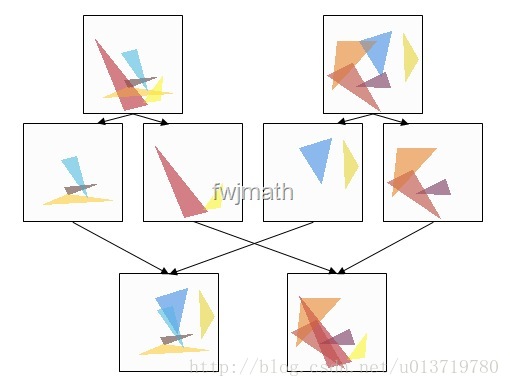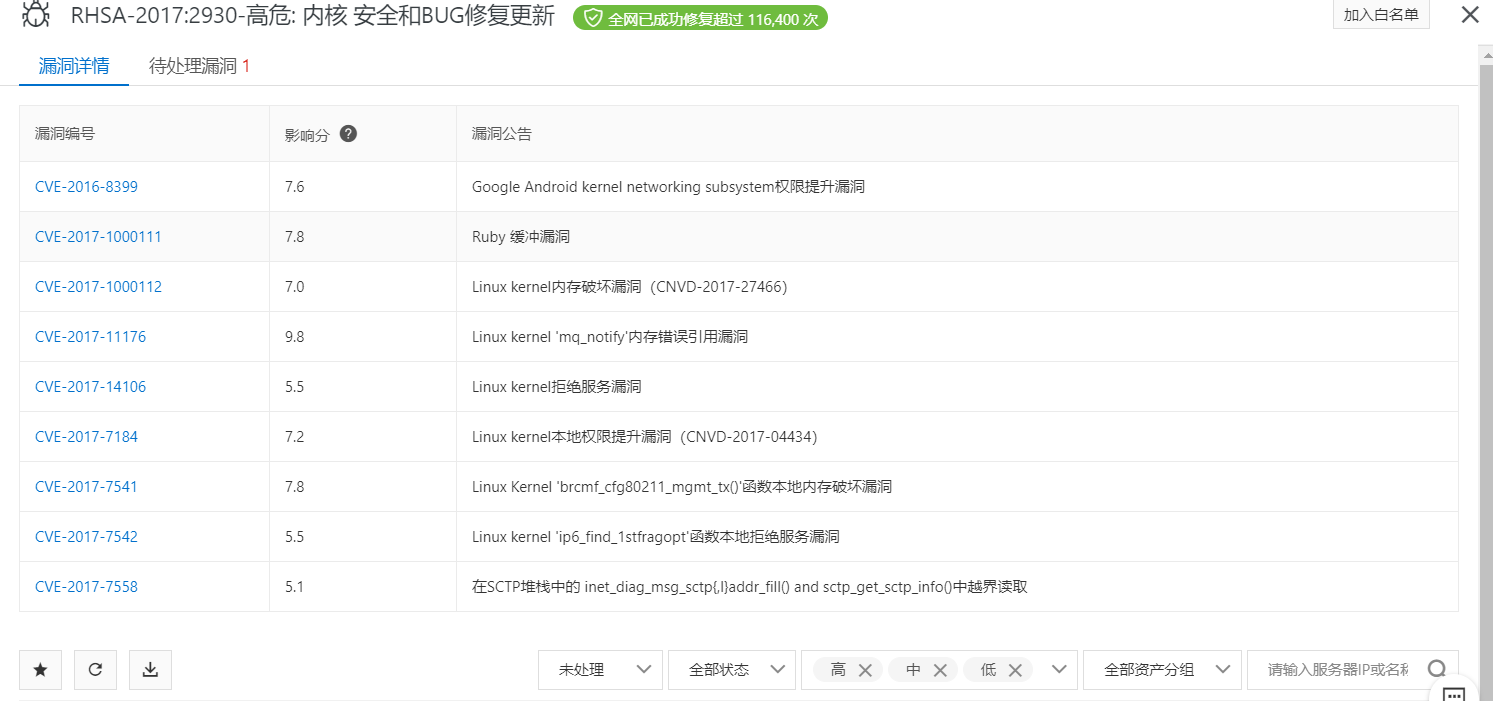从零开始实现遗传算法(用遗传算法求解函数的最大值)
遗传算法
遗传算法(Genetic Algorithm,简称GA)是一种最基本的进化算法,它是模拟达尔文生物进化理论的一种优化模型,最早由J.Holland教授于1975年提出。遗传算法中种群每个个体都是解空间上的一个可行解,通过模拟生物的进化过程,从而在解空间内搜索最优解。
首先,让我们刷新自己的记忆,试着理解一下达尔文提出的自然选择。
这个理论很简单:物种想要生生不息,就得持续自我提升,适者才能生存。种群中最优秀的特质应该传递给后代,而其他个体也不能被遗忘,这样才能维持一定的多样性,自然环境发生变化时才更容易适应。这是遗传算法的理论基础
遗传算法的基本操作可以用下图来描述:
个体的编码方式确定以后,针对上图操作的具体描述如下:
Step 1 种群初始化:根据问题特性设计合适的初始化操作(初始化操作应尽量简单,时间复杂度不易过高),即对种群中的N个个体进行初始化操作;
Step 2 个体评价:根据优化的目标函数计算种群中所有个体的适应值(fitness value);
Step 3 迭代设置:设置种群最大迭代次数n_iteration,并令当前迭代次数g=1;
Step 4 个体选择:设计合适的选择算子来对种群P(g)个体进行选择,被选择的个体将进入交配池中组成父代种群FP(g),用于交叉变换以产生新的个体。选择策略要基于个体适应值来进行,假如要优化的问题为最小化问题,那么具有较小适应值的个体被选择的概率相应应该大一些。常用的选择策略有轮盘赌选择,锦标赛选择等。
Step 5 交叉算子:根据交叉概率pm(预先指定,一般为0.9)来判断父代个体是否需要进行交叉操作。交叉算子要根据被优化问题的特性来设计,它是整个遗传算法的核心,它被设计的好坏将直接决定整个算法性能的优劣。
Step 6 变异算子:根据变异概率pc(预先指定,一般为0.1)来判断父代个体是否需要进行变异操作。变异算子的主要作用是保持种群的多样性,防止种群陷入局部最优,所以其一般被设计为一种随机变换。
通过交叉变异操作以后父代种群FP(g)生成了新的子代种群P(g+1),令种群迭代次数g=g+1,进行下一轮的迭代操作(跳转到Step 4),直至迭代次数达到最大的迭代次数。
为了更形象说明交叉操作的作用,我们以下图为例来深入理解一下交叉操作的作用:
动手教程:用遗传算法寻找函数的最大值
为了体验这个算法,我们用它来解决一个简单的问题:求解函数 f(x)f(x) 在 x∈[a,b]x∈[a,b] 的最大值。
在求解之前,我们先解释一下个体是什么。在本问题中,个体其实就是 ∈[a,b]∈[a,b] 中的 xx , 我们的目的就是找到一个最佳的个体 x0x0,使得 f(x0)f(x0) 达到最大值。
第一步,我们初始化一个种群:
def init_population(self):
population = np.random.randint(low=0, high=2, size=(self.n_population, self.DNA_size)).astype(np.int8)
return population第二步,计算种群中每个样本的适应度值(fitness_score),在计算种群中每个个体的fitness_score之前,我们先要提取出每个个体的DNA,在这里,我们用二进制来表示每个个体的DNA:
def fitness(self, population):
transform_population = self.transformDNA(population)
fitness_score = f(transform_population)
return fitness_score - fitness_score.min() # 在select函数中按照个体的适应度进行抽样的的时候,抽样概率值必须是非负的第三步,进行自然选择,选出基因好的个体作为父代:
def select(self, population, fitness_score):
fitness_score = fitness_score + 1e-4 # 下一步抽样的过程中用到了除法,出现除法就要考虑到分母为0的特殊情况
idx = np.random.choice(np.arange(self.n_population), size=self.n_population, replace=True, p=fitness_score/fitness_score.sum())
return population[idx]第四步,有了父代之后,就要产生后代了:
def create_child(self, parent, pop):
if np.random.rand() < self.cross_rate:
index = np.random.randint(0, self.n_population, size=1)
cross_points = np.random.randint(0, 2, self.DNA_size).astype(np.bool)
parent[cross_points] = pop[index, cross_points]
return parent第五步,产生的后代我们还需要对该后代进行一些基因突变,目的是保证种群的多样性:
def mutate_child(self, child):
for i in range(self.DNA_size):
if np.random.rand() < self.mutate_rate:
child[i] = 1
else:
child[i] = 0
return child最后一步就是开始进化了:
def evolution(self):
population = self.init_population()
for i in range(self.n_iterations):
fitness_score = self.fitness(population)
best_person = population[np.argmax(fitness_score)]
if i%100 == 0:
print(u'第%-4d次进化后, 基因(fitness_score)最好的个体是: %s, 其适应度(找到的函数最大值)是: %f' % (i, best_person,
f(self.transformDNA(best_person)) ) )
population = self.select(population, fitness_score)
population_copy = population.copy()
for parent in population:
child = self.create_child(parent, population_copy)
child = self.mutate_child(child)
parent[:] = child
population = population
self.best_person = best_person详细代码如下:
from __future__ import division
import numpy as np
import matplotlib.pyplot as plt
%matplotlib inline
# 找到函数f(x)在区间self.x_bounder上的最大值
def f(x):
return np.sin(x) + np.cos(x)
class GeneticAlgorithm(object):
"""遗传算法.
Parameters:
-----------
cross_rate: float
交配的可能性大小.
mutate_rate: float
基因突变的可能性大小.
n_population: int
种群的大小.
n_iterations: int
迭代次数.
DNA_size: int
DNA的长度.
x_bounder: list
x 轴的区间, 用遗传算法寻找x在该区间中的最大值.
"""
def __init__(self, cross_rate, mutation_rate, n_population, n_iterations, DNA_size):
self.cross_rate = cross_rate
self.mutate_rate = mutation_rate
self.n_population = n_population
self.n_iterations = n_iterations
self.DNA_size = 8 # DNA的长度
self.x_bounder = [-3, 4]
# 初始化一个种群
def init_population(self):
population = np.random.randint(low=0, high=2, size=(self.n_population, self.DNA_size)).astype(np.int8)
return population
# 将种群中的每个个体的DNA由二进制转换成十进制
def transformDNA(self, population):
population_decimal = ( (population.dot(np.power(2, np.arange(self.DNA_size)[::-1])) / np.power(2, self.DNA_size) - 0.5) *
(self.x_bounder[1] - self.x_bounder[0]) + 0.5 * (self.x_bounder[0] + self.x_bounder[1]) )
return population_decimal
# 计算种群中每个个体的适应度,适应度越高,说明该个体的基因越好
def fitness(self, population):
transform_population = self.transformDNA(population)
fitness_score = f(transform_population)
return fitness_score - fitness_score.min() # 在select函数中按照个体的适应度进行抽样的的时候,抽样概率值必须是非负的
# 对种群按照其适应度进行采样,这样适应度高的个体就会以更高的概率被选择
def select(self, population, fitness_score):
fitness_score = fitness_score + 1e-4 # 下一步抽样的过程中用到了除法,出现除法就要考虑到分母为0的特殊情况
idx = np.random.choice(np.arange(self.n_population), size=self.n_population, replace=True, p=fitness_score/fitness_score.sum())
return population[idx]
# 进行交配
def create_child(self, parent, pop):
if np.random.rand() < self.cross_rate:
index = np.random.randint(0, self.n_population, size=1)
cross_points = np.random.randint(0, 2, self.DNA_size).astype(np.bool)
parent[cross_points] = pop[index, cross_points]
return parent
# 基因突变
def mutate_child(self, child):
for i in range(self.DNA_size):
if np.random.rand() < self.mutate_rate:
child[i] = 1
else:
child[i] = 0
return child
# 进化
def evolution(self):
population = self.init_population()
for i in range(self.n_iterations):
fitness_score = self.fitness(population)
best_person = population[np.argmax(fitness_score)]
if i%100 == 0:
print(u'第%-4d次进化后, 基因(fitness_score)最好的个体是: %s, 其适应度(找到的函数最大值)是: %f' % (i, best_person,
f(self.transformDNA(best_person)) ) )
population = self.select(population, fitness_score)
population_copy = population.copy()
for parent in population:
child = self.create_child(parent, population_copy)
child = self.mutate_child(child)
parent[:] = child
population = population
self.best_person = best_person
def main():
ga = GeneticAlgorithm(cross_rate=0.9, mutation_rate=0.1, n_population=300, n_iterations=2000, DNA_size=8)
ga.evolution()
# 绘图
x = np.linspace(start=ga.x_bounder[0], stop=ga.x_bounder[1], num=200)
plt.plot(x, f(x))
plt.scatter(ga.transformDNA(ga.best_person), f(ga.transformDNA(ga.best_person)), s=200, lw=0, c='red', alpha=0.5)
ax = plt.gca()
ax.spines['right'].set_color('none') # 去掉右侧的轴
ax.spines['top'].set_color('none') # 去掉上方的轴
ax.xaxis.set_ticks_position('bottom') # 设置x轴的刻度仅在下方显示
ax.yaxis.set_ticks_position('left') # 设置y轴的刻度仅在左边显示
plt.show()
if __name__ == '__main__':
main()注:原文链接:https://blog.csdn.net/u013719780/article/details/78724971




 微信扫一扫,打赏阿沐吧~
微信扫一扫,打赏阿沐吧~








评论
访客
回复链接: https://pan.baidu.com/s/1AwLwI01wymiOjWgyZfWlIw 提取码: 7cqc 复制这段内容后打开百度网盘手机App,操作更方便哦
访客
回复序列模式挖掘(AprioriAll和AprioriSome算法)链接:http://pan.baidu.com/s/1skICcY5密码:uygi